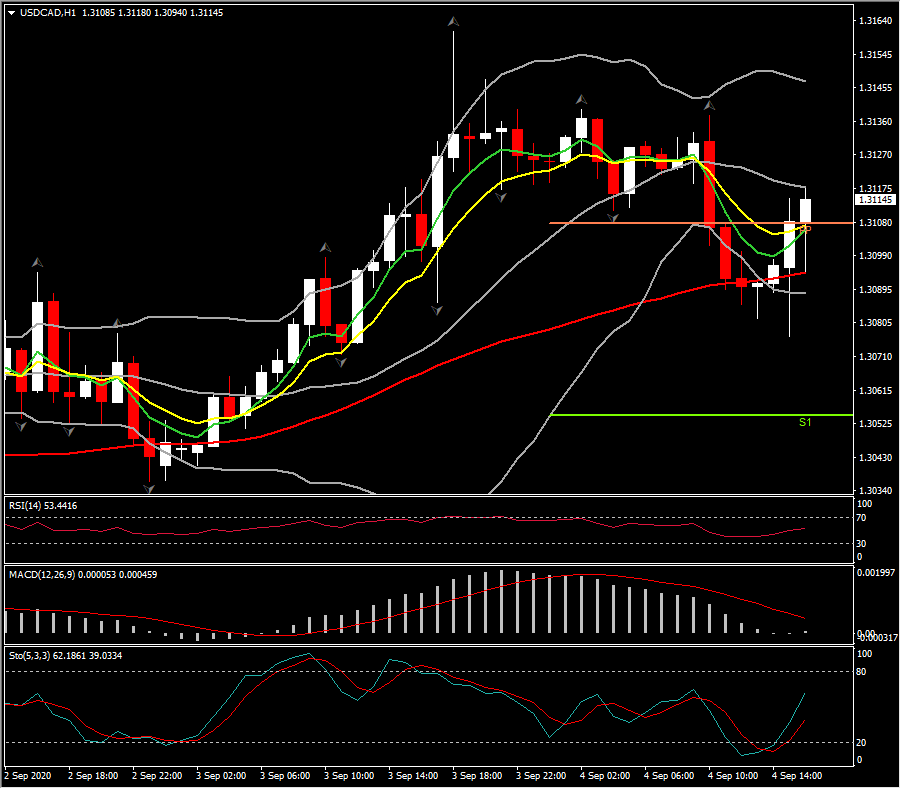USDCAD rallied to 1.3118 highs from 1.3078 lows following the twin US/Canada jobs reports. Both were close to consensus expectations, though the USD appeared to have received a broader bounce. The recent drop in oil prices has weighed on the CAD since then, with USOIL falling to just under the $41.00 mark since the data, down from earlier highs near $41.90. Thursday’s 1.3162 top marks resistance with the earlier lows marking support at 1.3078.
Elsewhere on US Dollar rally, EURUSD fell from 1.1845 to near 1.1798, while USDJPY rallied to 106.44 from under 106.46. Equity futures improved but remain mixed, as the exodus from tech stocks continues. Yields edged slightly higher.
A closer look to the data
Canada employment improved 245.8k in August after the 418.5k increase in July, the record 952.9k surge in June and 289.6k increase in May. Of course, the monthly jobs gains since May followed a largest ever -1,993.8k plunge in April and a sizable -1,010.7k loss in March. Note that before March, a 100k monthly move was quite large for Canada employment. But that was then. The total jobs gains from May to July are 1,906.8k while total jobs lost in March and April total 3,004.5k — so about two-thirds of those jobs have been recovered, consistent with the view that there is still a long way to go before the economy and labour market return to pre-COVID levels of activity. Full time jobs grew 205.8k in August after a 73.2k rise in July. Part time jobs were up 40.0k after the 345.3k jump in July. T he unemployment rate fell to 10.2% in August from 10.9% in July, having peaked at 13.7% in May.
Overall, a roughly as expected report that supports recovery story but also highlights the long journey faced by the economy to return to pre-COVID levels of employment and production. The BoC’s announcement next week is expected to reveal no change in rates and a reiteration of a whatever-it-takes policy outlook that is shared by the core central banks.
On the other hand in US, the jobs report was stronger than suggested by the 1,371k payroll gain after -39k in downward revisions. We saw a rise in the workweek to 34.6 hours from an already-elevated 34.5 in July, which allowed a big 1.2% August hours-worked rise. We also saw a 0.4% August rise in hourly earnings, after a downward July bump to 0.1% from 0.2%, which left a big 4.7% y/y gain. The household survey revealed a 3,756k civilian job surge and a 968k labor force gain, leaving a jobless rate plunge to 8.42% from 10.03%. The labor force participation rate improved to 61.7% from 61.4%. The payroll gain was partly lifted by a 344k rise in government jobs after -50k in downward revisions, which mostly reflected temporary Census hiring.
Payrolls over the May-August period have now reclaimed 48% of the jobs lost in March and April, and the steep rebound extended through August. Yet, the slowing in the pace of private payroll growth, and the concentration of the joblessness in lower-paid workers, captures the labor market quagmire for those previously in the restaurant, airline, hotel, and entertainment industries.
Click here to access the Economic Calendar
Andria Pichidi
Market Analyst
Disclaimer: This material is provided as a general marketing communication for information purposes only and does not constitute an independent investment research. Nothing in this communication contains, or should be considered as containing, an investment advice or an investment recommendation or a solicitation for the purpose of buying or selling of any financial instrument. All information provided is gathered from reputable sources and any information containing an indication of past performance is not a guarantee or reliable indicator of future performance. Users acknowledge that any investment in Leveraged Products is characterized by a certain degree of uncertainty and that any investment of this nature involves a high level of risk for which the users are solely responsible and liable. We assume no liability for any loss arising from any investment made based on the information provided in this communication. This communication must not be reproduced or further distributed without our prior written permission.




















